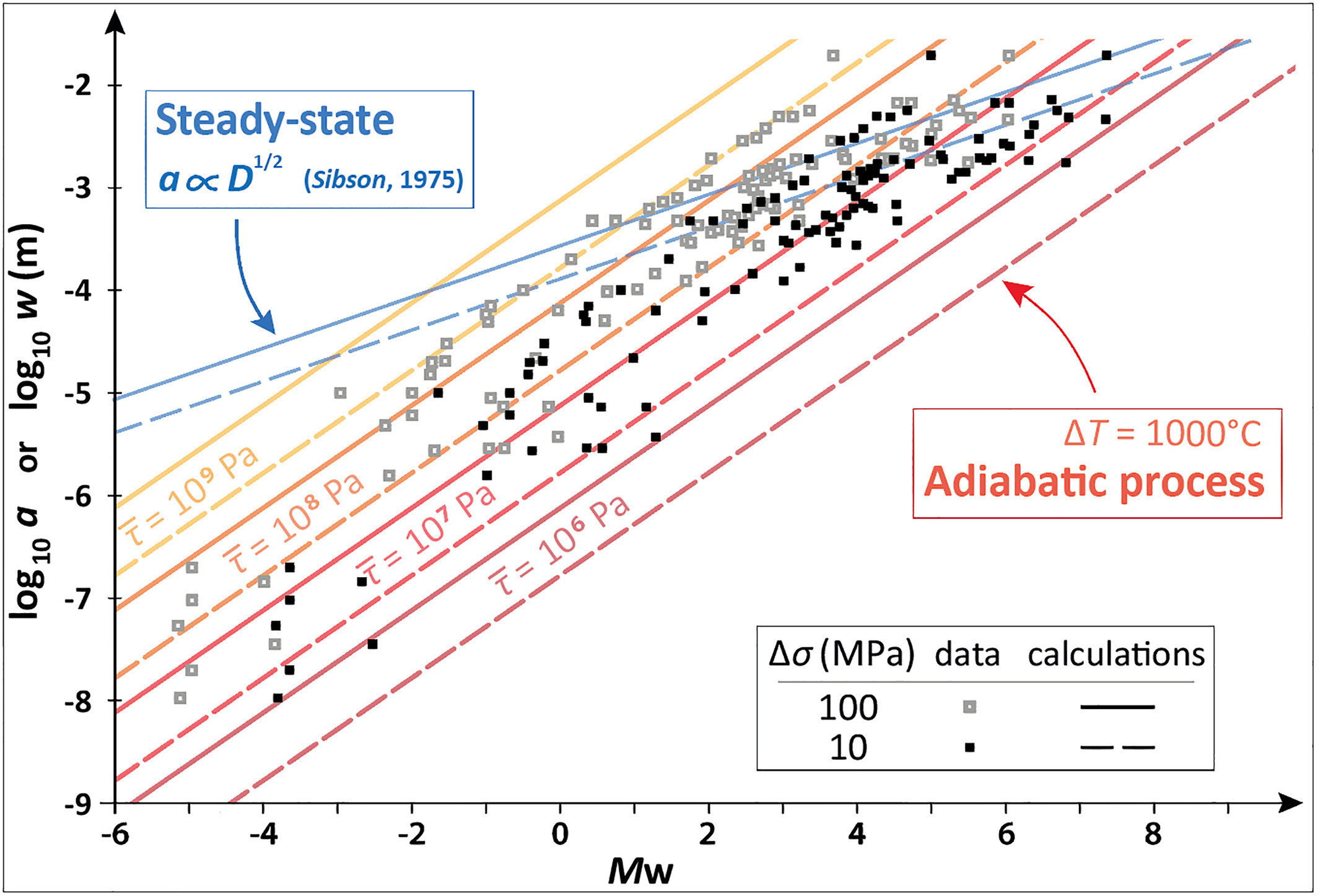You are probably thinking of pseudotachylite veins, which are interpreted as "fossil earthquakes" (among other things). To my knowledge, the first who tried to quantify some seismic parameters from pseudotachylite veins geometry was Sibson (1975). Notably, he determined a relationship between the vein thickness $a$ and the displacement (slip) along the fault $d$:
$d = 436 a^2$ (in cm)
Later on he also discussed shear stress estimates. But going all the way back from stress to magnitude (i.e., energy) does not seem trivial. You could dig in the literature citing Sibson, there have probably been some works trying to improve this in the last 40 years.
Edit $-$ I just found one of such studies: Ferrand et al. (2020). They found that pseudotachylite thickness scales with moment magnitude $M_W$:
Pseudotachylyte thickness $a$ (data) and dynamic molten zone width $w$ (calculations) vs. earthquake magnitude $M_W$.
